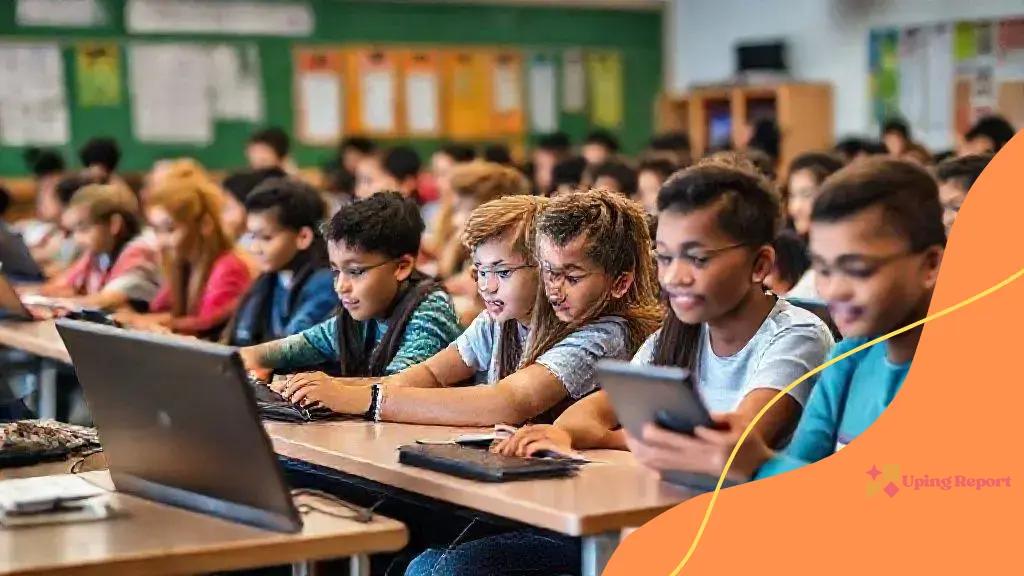educationreboot: transforming learning for the future

The future of learning environments will focus on flexible spaces, technology integration, student well-being, and community collaboration to create engaging and supportive education experiences.
Educationreboot is more than just a buzzword; it signifies a crucial shift in our approach to learning. Have you ever wondered how new ideas can reshape traditional classrooms and make learning more inclusive?
The need for an education reboot
In today’s fast-paced world, the need for an education reboot has become more pressing than ever. Traditional learning methods often fall short in engaging students or preparing them for real-world challenges. By embracing innovative strategies, we can enhance the educational experience and make learning more meaningful.
Why a Reboot is Essential
Educational systems globally are struggling to keep up with technological advancements and the evolving needs of society. Education reboot addresses these gaps by offering solutions that integrate modern tools and approaches.
Key Factors Driving the Change
- Student Engagement: Modern students require interactive and engaging learning experiences.
- Technological Integration: Technology is a critical part of our daily lives; education must reflect that.
- Diverse Learning Styles: Recognizing that students learn differently, a reboot can cater to various needs.
Furthermore, traditional classroom settings often neglect to promote critical thinking and collaboration skills. A revamped approach will place emphasis on these essential soft skills, preparing students to navigate complex social and professional landscapes.
One might wonder how this reboot can be effectively implemented. It starts with recognizing the importance of adaptive learning technologies. Such technologies personalize the learning journey for each student, ensuring they grasp concepts at their own pace.
Benefits of Embracing Change
- Increased Accessibility: Learning becomes available to a broader audience.
- Enhanced Outcomes: Students who are engaged typically perform better academically.
- Real-World Relevance: Rebooting education connects learning to real-life applications.
Ultimately, an education reboot isn’t just about changing methods; it’s about fostering a culture of continuous improvement and lifelong learning. By prioritizing innovative practices and technology, we can create educational environments where students thrive, setting them up for future success.
Innovative methods in modern learning
Innovative methods in modern learning are reshaping how students acquire knowledge and skills. Rather than sticking to traditional approaches, educators are exploring new techniques that better engage students and cater to their diverse needs. Implementing these methods can lead to a more enriched learning experience.
Active Learning Strategies
One significant innovation is the shift towards active learning. This approach encourages students to participate actively in their education, rather than passively receiving information. By discussing and working collaboratively, students absorb concepts more effectively.
Blended Learning Environments
Another exciting trend is blended learning, which combines traditional classroom teaching with online resources. This method allows for flexibility in how students learn. They can access materials at their own pace, which can enhance understanding and retention.
- Personalized Learning: Tailoring education to meet each student’s unique needs.
- Gamification: Incorporating game elements to increase student motivation.
- Project-Based Learning: Engaging students in real-world projects to apply their knowledge.
Furthermore, technology plays a crucial role in these modern methods. Tools like educational apps and online platforms enrich the curriculum. They provide varied resources that cater to different learning styles and preferences.
It’s also important to mention the role of collaboration in modern learning. Students often work together in teams to solve problems, fostering teamwork and communication skills. This prepares them for real-life situations where collaboration is vital.
Conclusion of Innovative Approaches
As educators embrace these innovative methods in modern learning, we can expect to see an increase in student engagement and performance. By focusing on active participation, personalized pathways, and collaborative work, the learning environment evolves to better prepare students for the future.
Technology’s role in education transformation

Technology plays a significant role in the transformation of education. As tools and resources develop, they create new opportunities for both students and teachers. By integrating technology into learning environments, education becomes more engaging, efficient, and relevant to today’s world.
Enhancing Access to Information
One major benefit of technology is the vast access to information it provides. With the internet, students can find resources and materials at their fingertips. This immediate access supports independent research and cultivates a love for learning.
Interactive Learning Experiences
Interactive educational tools, such as educational apps and online simulations, help students grasp complex concepts in a fun way. These methods encourage students to take an active role in their learning, leading to better retention of information.
- Virtual Classrooms: Online platforms enable learning from anywhere, breaking geographic barriers.
- Adaptive Learning Technologies: Personalize education by adjusting content to meet individual student needs.
- Collaboration Tools: Facilitate teamwork across distances, allowing students to work together on projects.
Moreover, technology supports teachers by providing them with valuable tools for assessment and feedback. Learning management systems (LMS) help educators track student progress more effectively. This allows teachers to identify challenges early and offer tailored support.
Using technology can also motivate students by integrating elements of gamification into lessons. When education resembles a game, students are more likely to be engaged and eager to participate. This approach can lead to a more positive classroom environment.
Future Trends in Educational Technology
Looking ahead, the role of technology in education will likely expand even further. Innovations like artificial intelligence and machine learning are developing new ways to personalize learning experiences. By harnessing these advancements, the education sector can continue to evolve and better prepare students for the future.
Challenges of implementing new education strategies
Implementing new education strategies comes with various challenges that educators and institutions must navigate. These challenges can hinder the effectiveness of innovative methods aimed at improving student learning experiences. Understanding these obstacles is crucial for successful implementation.
Resistance to Change
One significant challenge is the resistance to change from teachers and administrators. Many educators are accustomed to traditional teaching methods and may be hesitant to adopt new strategies. This reluctance can stem from fear of the unknown or lack of training in new technologies and approaches.
Inadequate Resources
Another challenge is the lack of resources, such as funding, technology, and training. Schools often face budget constraints that limit their ability to invest in the tools necessary for implementing new strategies. Without proper resources, it becomes difficult to sustain changes in teaching practices.
- Training and Professional Development: Ongoing training is essential for educators to feel confident in new methods.
- Technology Access: Students must have access to necessary technologies, which may not be possible in all regions.
- Time Constraints: Teachers may struggle to find time within their schedules to experiment with new strategies.
Moreover, aligning new methods with existing curricula can be tricky. Educators need to ensure that the introduction of new strategies complements the overall educational goals. Additionally, it is essential to have support from school administration to foster a culture that embraces change.
The involvement of parents and the community is also a factor. When families are not educated about new approaches, they may resist changes in the classroom environment. To promote understanding, effective communication is key.
Balancing Innovation and Tradition
While innovation is necessary, balancing new approaches with traditional practices can pose its own set of challenges. Schools must find the right mix that meets both current educational standards and the evolving needs of students.
The future of learning environments
The future of learning environments is bright and evolving rapidly. As we embrace changes in technology and pedagogy, educational settings are becoming more dynamic and student-centered. These new environments aim to foster creativity, collaboration, and critical thinking among learners.
Flexible Learning Spaces
One key aspect of future learning environments is the design of flexible learning spaces. Classrooms are transforming into versatile areas that can adapt to different teaching methods. For instance, movable furniture lets students work individually or in groups as needed, promoting active engagement.
Incorporating Technology
Technology will play a major role in shaping these environments. With advancements in virtual reality (VR) and augmented reality (AR), students will explore new dimensions of learning. These technologies provide immersive experiences that deepen understanding of complex subjects, making learning interactive and fun.
- Remote Learning Options: Online platforms enable continued access to education from anywhere.
- Collaborative Tools: Digital tools allow students to collaborate seamlessly, enhancing team projects.
- Data-Driven Insights: Learning analytics can help teachers tailor their instruction based on student data.
Moreover, the future of learning environments emphasizes mental well-being and emotional support. Schools are increasingly focusing on creating safe and inclusive spaces where students feel valued and heard. This supportive atmosphere allows learners to thrive academically and socially.
As we look forward, the integration of sustainability into learning environments will also be crucial. Eco-friendly designs and practices promote environmental awareness among students, reinforcing the importance of caring for our planet. Schools might incorporate green technologies and outdoor learning spaces that connect students with nature.
The Role of Community
Finally, community involvement will be essential in shaping these future spaces. Partnerships with local organizations can enhance educational experiences and provide students with real-world learning opportunities. By collaborating with the community, schools can expand their resources and support systems.
FAQ – Frequently Asked Questions about the Future of Learning Environments
What are flexible learning spaces?
Flexible learning spaces are adaptable classroom designs that allow for different setups and teaching methods, enabling both individual and group work.
How will technology impact future education?
Technology will enhance engagement by providing interactive learning experiences, including virtual reality and online collaboration tools.
Why is student well-being important in learning environments?
Focusing on student well-being creates a supportive atmosphere where learners feel safe, valued, and motivated to succeed.
How can communities contribute to education?
Communities can collaborate with schools to provide resources, real-world projects, and support systems that enhance the educational experience.
